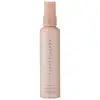What's inside
What's inside
 Key Ingredients
Key Ingredients

No key ingredients
 Benefits
Benefits

 Ingredients Side-by-side
Ingredients Side-by-side

Water
Skin ConditioningPropanediol
SolventBifida Ferment Lysate 3.6%
Skin ConditioningLactobacillus Ferment Lysate 3.6%
Skin ConditioningDipropylene Glycol
HumectantPentylene Glycol
Skin ConditioningButylene Glycol
HumectantLactococcus Ferment Lysate
Skin ConditioningPichia Ferment Lysate Filtrate
HumectantSaccharomyces Ferment Lysate Filtrate
Skin Conditioning1,2-Hexanediol
Skin ConditioningColostrum
Skin ConditioningChlorella Vulgaris Extract
Skin ConditioningXylitol
HumectantVincetoxicum Atratum Extract
Skin ConditioningAlthaea Rosea Flower Extract
Skin ConditioningHyaluronic Acid
HumectantMilk Lipids
Skin ConditioningBetaine
HumectantPanthenol
Skin ConditioningGlucose
HumectantGlycerin
HumectantFructooligosaccharides
HumectantFructose
HumectantEthylhexylglycerin
Skin ConditioningDiphenyl Dimethicone
EmollientAdenosine
Skin ConditioningTriethylhexanoin
MaskingSodium Citrate
BufferingSodium Phytate
Citric Acid
BufferingHydrogenated Lecithin
EmulsifyingBeta-Glucan
Skin ConditioningTocopherol
AntioxidantMagnesium Chloride
Tetradecyl Aminobutyroylvalylaminobutyric Urea Trifluoroacetate
Skin ConditioningWater, Propanediol, Bifida Ferment Lysate 3.6%, Lactobacillus Ferment Lysate 3.6%, Dipropylene Glycol, Pentylene Glycol, Butylene Glycol, Lactococcus Ferment Lysate, Pichia Ferment Lysate Filtrate, Saccharomyces Ferment Lysate Filtrate, 1,2-Hexanediol, Colostrum, Chlorella Vulgaris Extract, Xylitol, Vincetoxicum Atratum Extract, Althaea Rosea Flower Extract, Hyaluronic Acid, Milk Lipids, Betaine, Panthenol, Glucose, Glycerin, Fructooligosaccharides, Fructose, Ethylhexylglycerin, Diphenyl Dimethicone, Adenosine, Triethylhexanoin, Sodium Citrate, Sodium Phytate, Citric Acid, Hydrogenated Lecithin, Beta-Glucan, Tocopherol, Magnesium Chloride, Tetradecyl Aminobutyroylvalylaminobutyric Urea Trifluoroacetate
 Reviews
Reviews

Ingredients Explained
These ingredients are found in both products.
Ingredients higher up in an ingredient list are typically present in a larger amount.
Butylene Glycol (or BG) is used within cosmetic products for a few different reasons:
Overall, Butylene Glycol is a safe and well-rounded ingredient that works well with other ingredients.
Though this ingredient works well with most skin types, some people with sensitive skin may experience a reaction such as allergic rashes, closed comedones, or itchiness.
Learn more about Butylene GlycolPentylene glycol is typically used within a product to thicken it. It also adds a smooth, soft, and moisturizing feel to the product. It is naturally found in plants such as sugar beets.
The hydrophilic trait of Pentylene Glycol makes it a humectant. As a humectant, Pentylene Glycol helps draw moisture from the air to your skin. This can help keep your skin hydrated.
This property also makes Pentylene Glycol a great texture enhancer. It can also help thicken or stabilize a product.
Pentylene Glycol also acts as a mild preservative and helps to keep a product microbe-free.
Some people may experience mild eye and skin irritation from Pentylene Glycol. We always recommend speaking with a professional about using this ingredient in your routine.
Pentylene Glycol has a low molecular weight and is part of the 1,2-glycol family.
Learn more about Pentylene GlycolWater. It's the most common cosmetic ingredient of all. You'll usually see it at the top of ingredient lists, meaning that it makes up the largest part of the product.
So why is it so popular? Water most often acts as a solvent - this means that it helps dissolve other ingredients into the formulation.
You'll also recognize water as that liquid we all need to stay alive. If you see this, drink a glass of water. Stay hydrated!
Learn more about Water